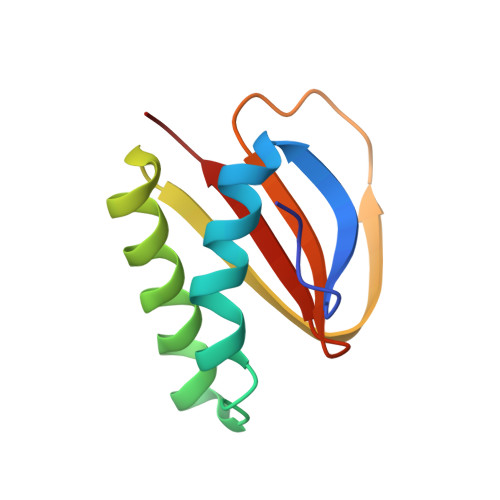Structural insights into a 20.8-kDa tegumental-allergen-like (TAL) protein from Clonorchis sinensis
Jo, C.H., Son, J., Kim, S., Oda, T., Kim, J., Lee, M.R., Sato, M., Kim, H.T., Unzai, S., Park, S.Y., Hwang, K.Y.(2017) Sci Rep 7: 1764-1764
- PubMed: 28496122
- DOI: https://doi.org/10.1038/s41598-017-02044-0
- Primary Citation of Related Structures:
5X2D, 5X2E - PubMed Abstract:
Survival of Clonorchis sinensis, a cause of human clonorchiasis, requires tegument proteins, which are localized to the tegumental outer surface membrane. These proteins play an important role in a host response and parasite survival. Thus, these proteins are interesting molecular targets for vaccine and drug development. Here, we have determined two crystal structures of the calmodulin like domain (amino acid [aa] positions 1-81) and dynein light chain (DLC)-like domain (aa 83-177) of a 20.8-kDa tegumental-allergen-like protein from Clonorchis sinensis (CsTAL3). The calmodulin like domain has two Ca 2+ -binding sites (named CB1 and CB2), but Ca 2+ binds to only one site, CB1. The DLC-like domain has a dimeric conformation; the interface is formed mainly by hydrogen bonds between the main chain atoms. In addition, we have determined full-length structure of CsTAL3 in solution and showed the conformational change of CsTAL3 induced by Ca 2+ ion binding using small-angle X-ray scattering analysis and molecular dynamics simulations. The Ca 2+ -bound form has a more extended conformation than the Ca 2+ -free from does. These structural and biochemical analyses will advance the understanding of the biology of this liver fluke and may contribute to our understanding of the molecular mechanism of calcium-responsive and tegumental-allergen-like proteins.
Organizational Affiliation:
Division of Biotechnology, College of Life Sciences & Biotechnology, Korea University, Seoul, 136-701, Republic of Korea.














